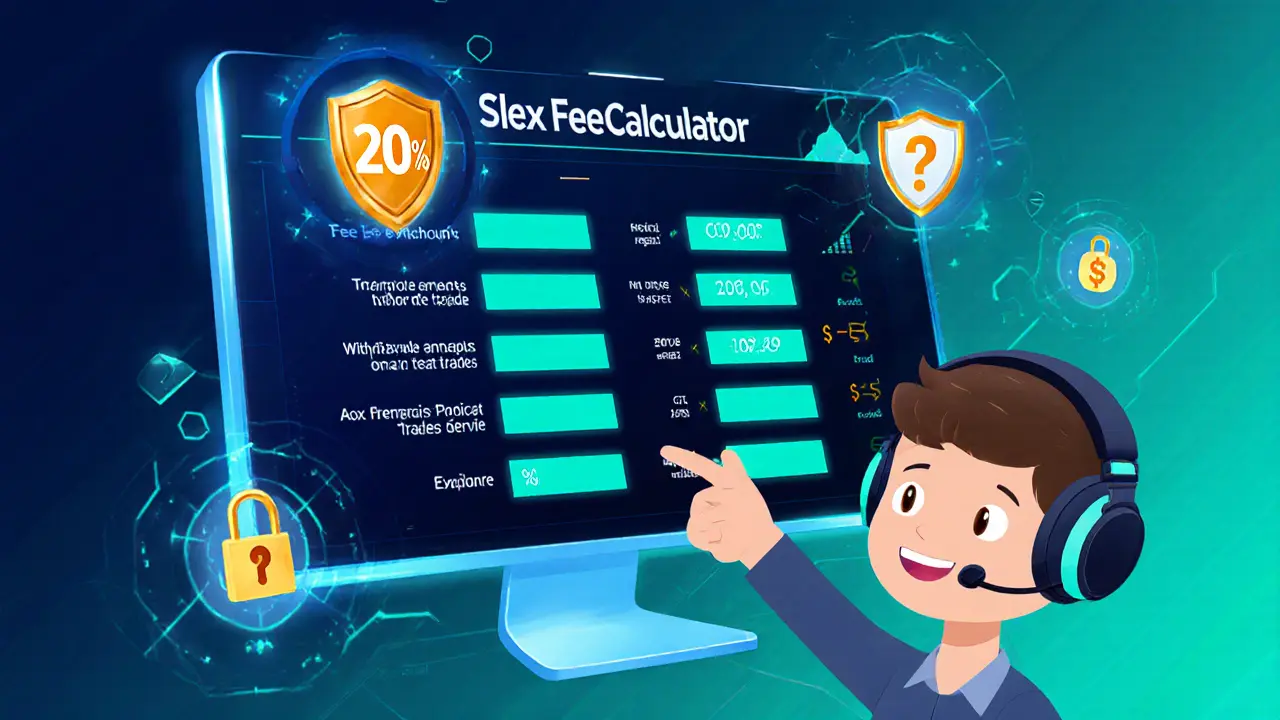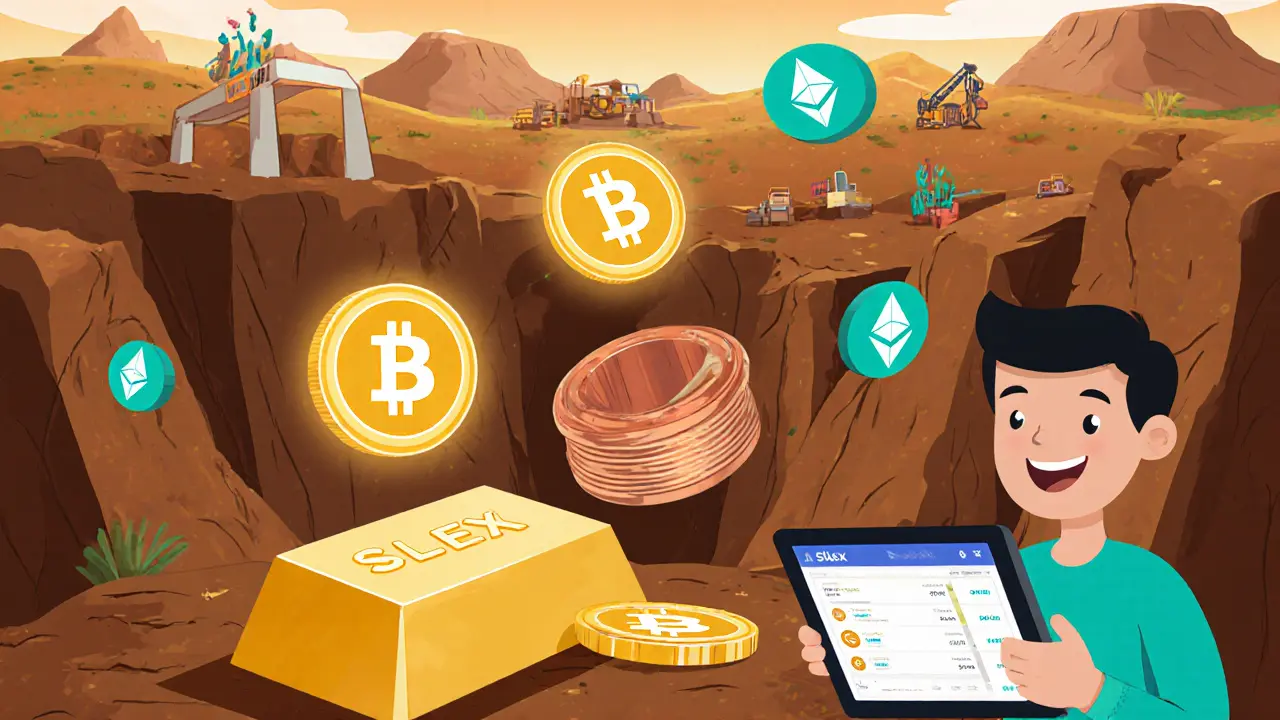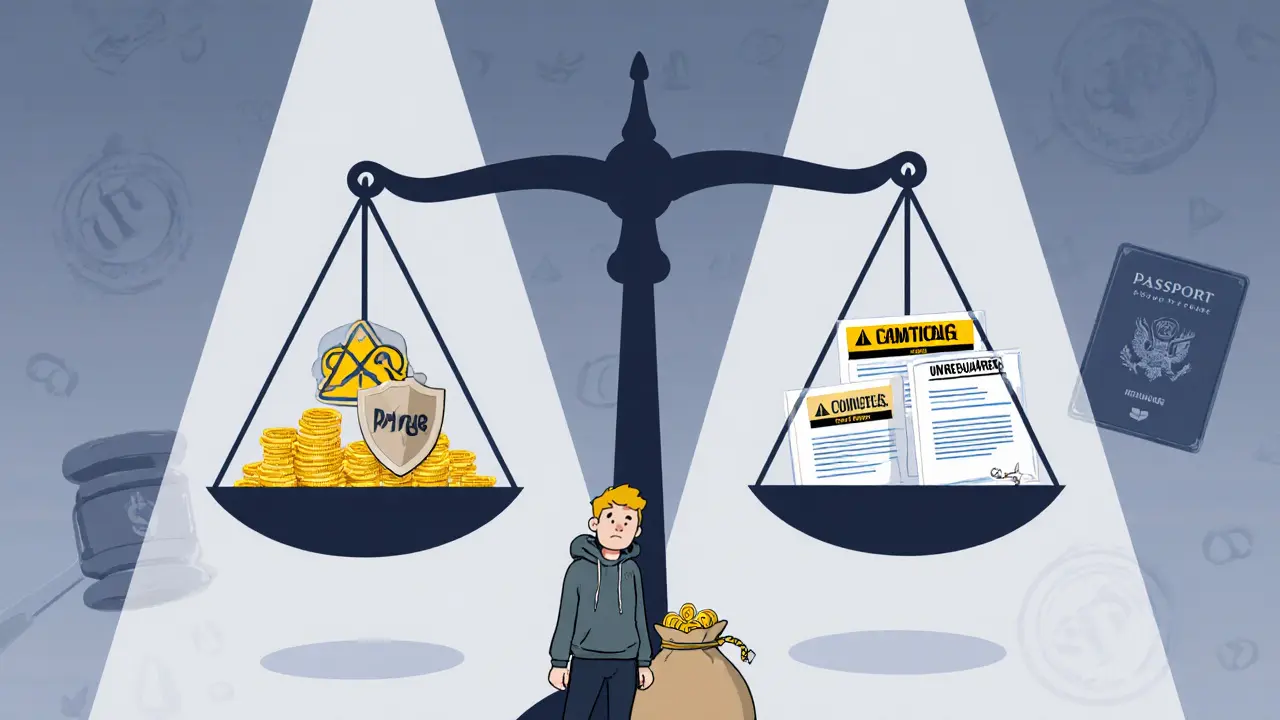
Slex Exchange Fee Calculator
Spot Trading Fees: $0.00
Withdrawal Fees: $0.00
Premium Services:
Total Estimated Cost: $0.00
Effective Fee Rate: 0%
Zero-Fee Advantage
Slex offers 0% maker/taker fees on spot trading, saving you significant costs compared to traditional exchanges.
Security Features
Cold wallet storage and a 10% insurance fund help protect your assets.
Hidden Risks
Withdrawal fees, premium services, and regulatory risks can add up quickly.
When looking for a new Slex Exchange is a centralized cryptocurrency trading platform launched in August2023 that combines spot crypto trading, tokenized commodities, and AI‑driven tools, traders instantly wonder how it stacks up against the heavyweights. Below you’ll find a no‑fluff breakdown of what matters most: fees, security, asset breadth, user experience, and the red flags that could turn a promising launch into a potential nightmare.
- Zero‑fee spot trading is real, but it comes with hidden costs.
- Security features include cold‑wallet storage and a 10% insurance fund.
- Over 100 crypto pairs plus tokenized commodities are available.
- Unregulated status and jurisdiction bans raise trust concerns.
- Community sentiment is split; some praise the pricing, others warn of scams.
What Slex Exchange Offers
The platform markets itself as a hybrid ecosystem. On the crypto side you get spot trading for major coins like Bitcoin (BTC) and Ethereum (ETH), plus a dozen altcoins and stablecoins. Beyond that, Slex tokenizes real‑world commodities-gold, copper, and even cobalt from mining operations in the Democratic Republic of Congo-allowing you to trade a digital version of a physical asset. The native SLEX token is deflationary, featuring buy‑back and burn mechanisms that aim to increase scarcity over time.
Fee Structure: The Zero‑Fee Claim
Zero‑fee trading is the headline grabber. The exchange advertises 0% maker and taker fees on all spot trades. In practice, that means you can buy BTC for $30,000 and sell it for $30,100 without paying a single cent in transaction fees-a stark contrast to Binance (0.1% standard fee) or Coinbase (up to 4% for retail users).
However, the “free” label hides a few nuances:
- Deposit minimums: $5USDT is the smallest amount you can fund, which is low but still a barrier for ultra‑small traders.
- Withdrawal fees are not zero; they follow the blockchain network rates (e.g., 0.0005BTC for Bitcoin withdrawals).
- The platform keeps a 10% portion of any fees it does collect in an insurance fund. That fund is earmarked for safeguarding user assets during extreme market events, but it also means the exchange is retaining a slice of any future revenues.
- Premium services-such as AI‑driven trading bots and VIP tier upgrades-require subscription fees that can range from $30 to $300 per month.
Overall, the fee model works well for high‑volume traders who can offset withdrawal costs, but casual users might see the hidden fees add up.
Security Measures and Asset Protection
Slex boasts a few standard security practices. The core trading engine runs on a distributed ledger, and the majority of user funds are stored in cold wallets with multi‑signature protection. In addition, the platform maintains an insurance reserve-10% of all collected fees-to cover potential losses, a concept similar to the insurance funds used by larger exchanges during market crashes.
On the flip side, the exchange lacks a clear regulatory framework. It operates without a license from any financial authority, and its team remains largely anonymous. This opacity limits recourse if something goes wrong. Moreover, the platform is on a known scam monitoring list, with accusations of hidden team information and insufficient documentation. While there is no public record of a major breach, the regulatory gap is a considerable risk.
Asset Variety: Crypto Meets Commodities
Beyond the usual 100+ crypto pairs, Slex’s unique selling point is tokenized commodities. The exchange claims partnerships with mining firms in Lubumbashi, Kakanda, and Likasi, securing a $3billion supply of raw materials. Tokenized assets can be traded 24/7, offering exposure to commodities without the hassle of physical storage.
Critics note that independent verification of these partnerships is scarce. If the backing proves legitimate, it could be a game‑changer for portfolio diversification; if not, it adds another layer of uncertainty.

User Experience, Mobile Access, and Support
The UI is clean and beginner‑friendly. You can place limit or market orders without navigating through complex menus. The platform does not offer a native mobile app; instead, it relies on a responsive web interface that works in browsers on iOS and Android. For traders who prefer apps, this could feel limiting.
Customer support is available via email and Telegram. Response times vary-some users report a 30‑minute turnaround on Telegram, while email replies can take up to 48hours. Documentation is present but not exhaustive, and key policies (e.g., KYC procedures) are buried in the footer.
Regulatory Landscape and Geographic Restrictions
Slex blocks access from the United States, United Kingdom, Canada, Australia, Israel, Singapore, Japan, and most EU countries. This restriction is a direct result of the exchange’s unregulated status; operating in those jurisdictions would attract heavy compliance requirements.
The lack of regulation means the exchange is not subject to AML/KYC standards enforced by reputable financial bodies. While this can speed up onboarding, it also raises the potential for illicit activity and makes the platform a target for future regulatory crackdowns.
How Slex Stacks Up: Comparison Table
| Feature | Slex Exchange | Binance | Coinbase |
|---|---|---|---|
| Spot trading fees | 0% maker/taker | 0.1% maker / 0.1% taker | 0%-4% (tiered) |
| Leverage / margin | No margin trading | Up to 125× | Up to 5× |
| Regulatory status | Unregulated | Registered in multiple jurisdictions | Regulated in US, EU, etc. |
| Asset variety | 100+ crypto pairs + tokenized commodities | Over 600 pairs, futures, options | ~200 pairs, limited DeFi |
| Minimum deposit | $5USDT | $10USDT | $25USD |
| Insurance fund | 10% of collected fees | SAFU fund (10% of fees) | None |
| Geographic access | Blocked in US, EU, UK, AU, etc. | Globally available (some restrictions) | Available in most regulated regions |
Pros and Cons Summary
- Pros
- Zero‑fee spot trading can dramatically cut costs for active traders.
- Unique tokenized commodity assets add diversification options.
- Cold‑wallet storage and a dedicated insurance fund improve asset safety.
- Low minimum deposit lowers entry barriers.
- Cons
- Unregulated status offers no legal protection and raises trust issues.
- Limited leverage and no margin trading restrict advanced strategies.
- Community warnings about potential scams and opaque team details.
- No native mobile app; reliance on web browser can be less convenient.
- Restricted access for users in major economies.
Final Verdict: Is Slex Worth Your Money?
If you’re a high‑frequency trader who lives on zero‑fee spreads and can tolerate the regulatory gray area, Slex’s pricing is attractive. The tokenized commodity offering also appeals to investors looking for exposure beyond pure crypto.
However, for most retail users the lack of regulation, limited user reviews, and the platform’s presence on scam‑monitoring lists outweigh the fee benefits. Until Slex secures a clear licensing framework and provides transparent team information, it should be approached with caution-ideally with only a small allocation of your total crypto portfolio.

Frequently Asked Questions
Is Slex Exchange really free to trade?
Slex advertises 0% maker and taker fees for spot trading, which is correct. You still pay blockchain withdrawal fees and may incur costs for premium services like AI bots or VIP tiers.
What security measures does Slex use?
The exchange stores the majority of funds in cold wallets with multi‑signature protection and maintains an insurance fund equal to 10% of collected fees. However, it lacks regulatory oversight, so legal recourse is limited.
Can I trade commodities on Slex?
Yes. Slex tokenizes assets like gold, copper, and cobalt, allowing you to trade them 24/7 as digital tokens. Independent verification of the backing is still pending.
Why is Slex blocked in the US and EU?
Because the exchange operates without any financial license, it cannot comply with AML/KYC regulations required in those jurisdictions. To avoid legal trouble, it simply denies access.
Is Slex a scam?
The platform is not officially classified as a scam, but it appears on monitoring lists due to hidden team details and limited documentation. Treat it cautiously and only invest money you can afford to lose.


Write a comment